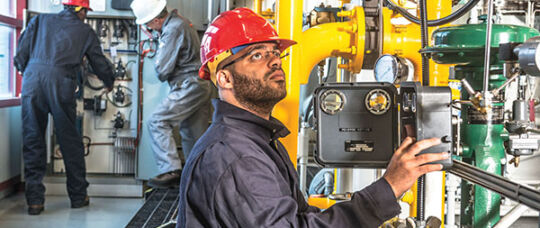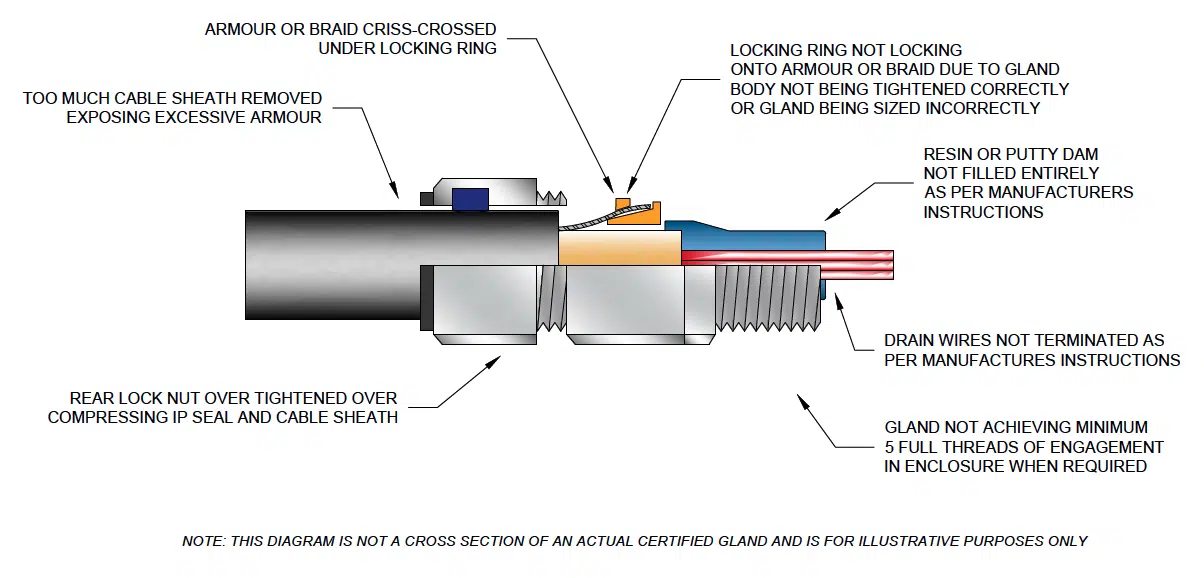All About Roar Solutions
All About Roar Solutions
Blog Article
The Greatest Guide To Roar Solutions
Table of ContentsRoar Solutions Things To Know Before You BuyThe Only Guide for Roar SolutionsSome Known Incorrect Statements About Roar Solutions
In order to safeguard installments from a prospective explosion an approach of analysing and classifying a possibly unsafe area is required. The purpose of this is to ensure the proper choice and installation of devices to ultimately stop an explosion and to make certain safety of life.
(https://www.cybo.com/AU-biz/roar-solutions)
No tools should be installed where the surface temperature of the devices is above the ignition temperature level of the provided hazard. Below are some usual dust harmful and their minimal ignition temperature level. Coal Dust 380C 225C Polythene 420C (melts) Methyl Cellulose 420C 320C Starch 460C 435C Flour 490C 340C Sugar 490C 460C Grain Dust 510C 300C Phenolic Resin 530C > 450C Aluminium 590C > 450C PVC 700C > 450C Soot 810C 570C The likelihood of the hazard being present in a concentration high enough to create an ignition will certainly differ from location to location.
In order to classify this danger an installation is separated right into areas of risk depending upon the quantity of time the harmful exists. These areas are referred to as Areas. For gases and vapours and dirts and fibres there are three areas. Area 0 Zone 20 A dangerous atmosphere is extremely most likely to be existing and may be present for lengthy durations of time (> 1000 hours annually) or perhaps continually Area 1 Zone 21 A hazardous ambience is feasible but not likely to be present for long durations of time (> 10 450 C [842 F] A category of T6 implies the minimum ignition temperature level is > 85 C [185 F] Harmful area electric equipment possibly created for use in greater ambient temperatures. This would certainly indicated on the ranking plate e.g. EExe II C T3 Ta + 60C( This indicates at 60C ambient T3 will not be gone beyond) T1 T1, T2, T3, T4, T5, T6 T2 T2, T3, T4, T5, T6 T3 T3, T4, T5, T6 T4 T4, T5, T6 T5 T5, T6 T6 T6 A T Class ranking of T1 indicates the maximum surface area temperature created by the instrument at 40 C is 450 C. Thinking the connected T Course and Temperature rating for the tools are suitable for the location, you can always make use of an instrument with an extra rigorous Division ranking than required for the area. There isn't a clear answer to this concern unfortunately. It truly does rely on the sort of equipment and what repairs need to be performed. Tools with particular examination procedures that can't be executed in the field in order to achieve/maintain 3rd party rating. Need to return to the manufacturing facility if it is before the equipment's solution. Area Repair By Authorised Worker: Difficult testing may not be called for nonetheless particular treatments might require to be followed in order for the equipment to preserve its third celebration ranking. Authorized personnel should be utilized to do the job appropriately Repair work must be a like for like replacement. New element should be taken into consideration as a straight substitute calling for no unique screening of the tools after the repair is complete. Each tool with a harmful ranking need to be evaluated independently. These are described at a high level below, however, for more detailed information, please refer directly to the standards.
See This Report on Roar Solutions
The devices register is an useful link extensive data source of devices records that includes a minimum set of fields to determine each item's location, technological criteria, Ex lover classification, age, and environmental information. The ratio of In-depth to Close inspections will certainly be established by the Tools Danger, which is evaluated based on ignition risk (the chance of a resource of ignition versus the possibility of a flammable ambience )and the harmful area category
( Zone 0, 1, or 2). Implementing a durable Risk-Based Evaluation( RBI )strategy is vital for making sure compliance and safety and security in handling Electrical Devices in Hazardous Areas( EEHA).
The Of Roar Solutions

In terms of explosive risk, an unsafe area is an environment in which an eruptive atmosphere is present (or might be expected to be present) in quantities that require special precautions for the construction, setup and use of equipment. eeha courses. In this short article we check out the difficulties faced in the work environment, the risk control measures, and the needed proficiencies to work securely
These materials can, in particular conditions, develop eruptive ambiences and these can have major and terrible consequences. Most of us are acquainted with the fire triangle remove any one of the 3 aspects and the fire can not happen, however what does this mean in the context of unsafe locations?
In many circumstances, we can do little about the levels of oxygen in the air, yet we can have significant influence on resources of ignition, as an example electric equipment. Hazardous locations are recorded on the harmful area category drawing and are determined on-site by the triangular "EX-SPOUSE" sign. Here, amongst various other essential information, areas are divided right into three kinds depending on the risk, the chance and duration that an eruptive ambience will exist; Area 0 or 20 is considered one of the most unsafe and Area 2 or 22 is regarded the least.
Report this page